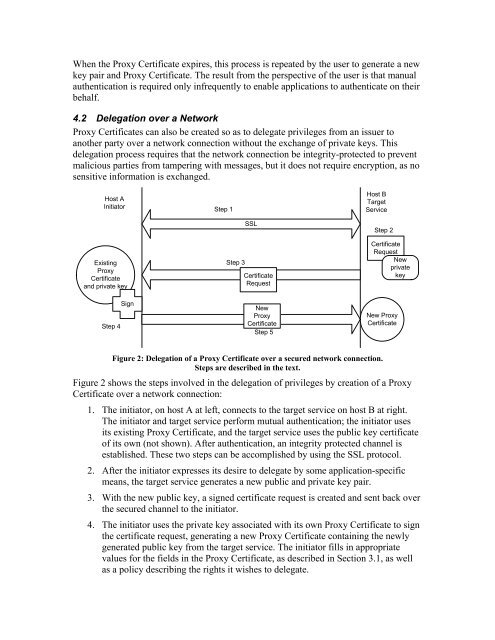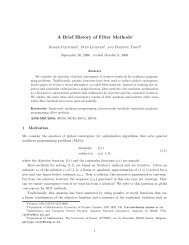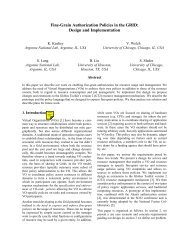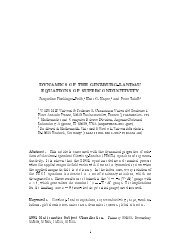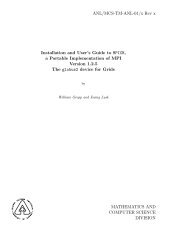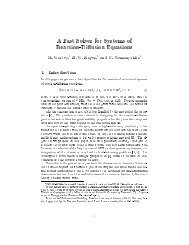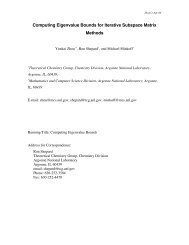X.509 Proxy Certificates for Dynamic Delegation - tp.mcs.anl.gov ...
X.509 Proxy Certificates for Dynamic Delegation - tp.mcs.anl.gov ...
X.509 Proxy Certificates for Dynamic Delegation - tp.mcs.anl.gov ...
Create successful ePaper yourself
Turn your PDF publications into a flip-book with our unique Google optimized e-Paper software.
When the <strong>Proxy</strong> Certificate expires, this process is repeated by the user to generate a newkey pair and <strong>Proxy</strong> Certificate. The result from the perspective of the user is that manualauthentication is required only infrequently to enable applications to authenticate on theirbehalf.4.2 <strong>Delegation</strong> over a Network<strong>Proxy</strong> <strong>Certificates</strong> can also be created so as to delegate privileges from an issuer toanother party over a network connection without the exchange of private keys. Thisdelegation process requires that the network connection be integrity-protected to preventmalicious parties from tampering with messages, but it does not require encryption, as nosensitive in<strong>for</strong>mation is exchanged.Host AInitiatorStep 1Host BTargetServiceExisting<strong>Proxy</strong>Certificateand private keyStep 3SSLCertificateRequestStep 2CertificateRequestNewprivatekeyStep 4SignNew<strong>Proxy</strong>CertificateStep 5New <strong>Proxy</strong>CertificateFigure 2: <strong>Delegation</strong> of a <strong>Proxy</strong> Certificate over a secured network connection.Steps are described in the text.Figure 2 shows the steps involved in the delegation of privileges by creation of a <strong>Proxy</strong>Certificate over a network connection:1. The initiator, on host A at left, connects to the target service on host B at right.The initiator and target service per<strong>for</strong>m mutual authentication; the initiator usesits existing <strong>Proxy</strong> Certificate, and the target service uses the public key certificateof its own (not shown). After authentication, an integrity protected channel isestablished. These two steps can be accomplished by using the SSL protocol.2. After the initiator expresses its desire to delegate by some application-specificmeans, the target service generates a new public and private key pair.3. With the new public key, a signed certificate request is created and sent back overthe secured channel to the initiator.4. The initiator uses the private key associated with its own <strong>Proxy</strong> Certificate to signthe certificate request, generating a new <strong>Proxy</strong> Certificate containing the newlygenerated public key from the target service. The initiator fills in appropriatevalues <strong>for</strong> the fields in the <strong>Proxy</strong> Certificate, as described in Section 3.1, as wellas a policy describing the rights it wishes to delegate.


